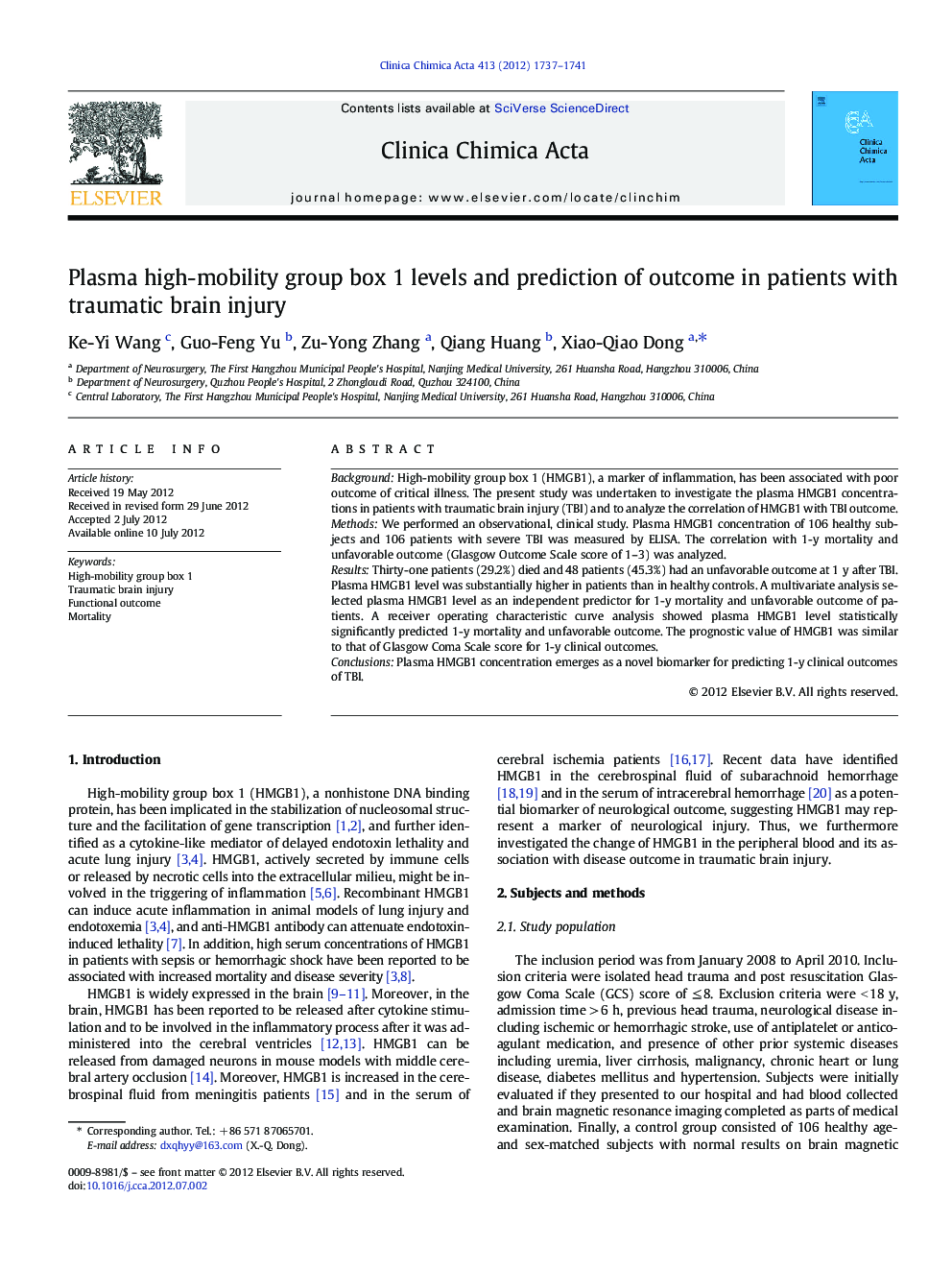| Article ID | Journal | Published Year | Pages | File Type |
|---|---|---|---|---|
| 1965553 | Clinica Chimica Acta | 2012 | 5 Pages |
BackgroundHigh-mobility group box 1 (HMGB1), a marker of inflammation, has been associated with poor outcome of critical illness. The present study was undertaken to investigate the plasma HMGB1 concentrations in patients with traumatic brain injury (TBI) and to analyze the correlation of HMGB1 with TBI outcome.MethodsWe performed an observational, clinical study. Plasma HMGB1 concentration of 106 healthy subjects and 106 patients with severe TBI was measured by ELISA. The correlation with 1-y mortality and unfavorable outcome (Glasgow Outcome Scale score of 1–3) was analyzed.ResultsThirty-one patients (29.2%) died and 48 patients (45.3%) had an unfavorable outcome at 1 y after TBI. Plasma HMGB1 level was substantially higher in patients than in healthy controls. A multivariate analysis selected plasma HMGB1 level as an independent predictor for 1-y mortality and unfavorable outcome of patients. A receiver operating characteristic curve analysis showed plasma HMGB1 level statistically significantly predicted 1-y mortality and unfavorable outcome. The prognostic value of HMGB1 was similar to that of Glasgow Coma Scale score for 1-y clinical outcomes.ConclusionsPlasma HMGB1 concentration emerges as a novel biomarker for predicting 1-y clinical outcomes of TBI.
► High-mobility group box 1 was released after traumatic brain injury. ► High-mobility group box 1 was highly associated with Glasgow Coma Scale scores and C-reactive protein. ► High-mobility group box 1 emerged as an independent predictor for long-term outcome. ► The predictive value of high-mobility group box 1 was similar to that of Glasgow Coma Scale score.
